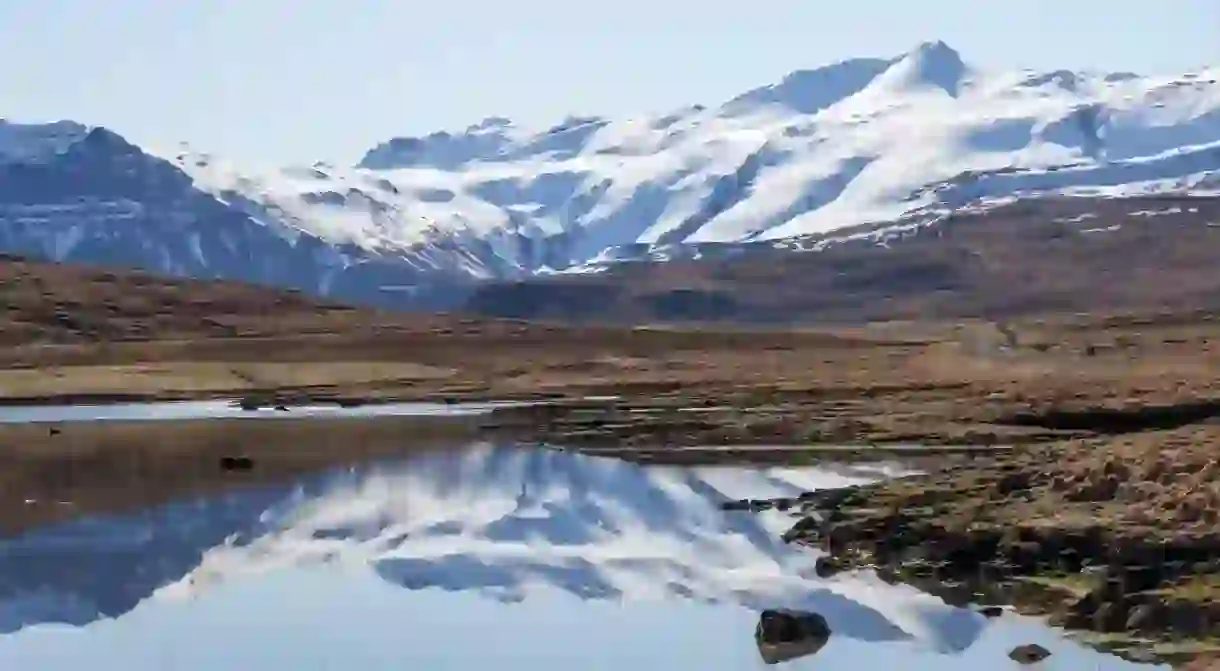In Search of Elves, Giants and Gods in Magical Iceland

To help the long winter nights pass, Icelandic communities would gather around their fires, spinning tales of hidden people, bickering trolls and greedy serpents. With a wealth of spectacular wonders beyond Iceland’s touristy ‘golden circle’, why not travel through some of the landscapes that inspired the fantastical Icelandic mythology? Who knows, you may end up with a tale or two of your own to tell.
The Lagoon of Creation
The stories in Iceland’s medieval literary work, Edda, pitch the elemental forces of fire and ice against one another. Before life, there was only Niflheim, the land of mist and ice, and Muspelheim, the realm of fire. A frozen river in a deep void separated the two elemental realms, within which the first person was born: Ymir, the vast ice giant, whose thoughts were clouds. Nowhere in Iceland does that narrative match more closely than with Jökulsárlón, where the glacier flows out of Iceland‘s volcanic interior, birthing icebergs into a dreamy lagoon.

Supernatural waterfalls
Most of Iceland’s waterfalls, of which there are many, are said to be inhabited by supernatural beings. If you drive through the seemingly endless Westfjords, each one a wrinkle in time and space, you might just come upon the majestic waterfall, Dynjandi. In one legend, the waterfall is the cascading bridal veil of a jilted giantess, whose thunderous roar of heartbreak can be heard from the very mouth of the fjord.

A modern myth claims that lawspeaker (a unique Scandinavian legal office) Þorgeir Ljósvetningagoði denounced the pagan Norse gods by throwing their idols into a waterfall and declaring Christianity as the official religion of Iceland from thence forth. The waterfall in question is Goðafoss (waterfall of the gods), where it is believed that the bellowing fury of the Norse gods can still be heard over the crashing of the water.
Canyon of the hidden people
Ásbyrgi is a vast horseshoe-shaped canyon in Iceland’s northeast. Legend claims it was formed by the hoof of Sleipnir, Odin’s eight-legged mount, as the god galloped past. However, there’s more to this canyon than meets the eye. In Icelandic folklore, Ásbyrgi is the capital of the huldufólk (the hidden people), whose homes, churches and concert halls exist within the moss-covered boulders and canyon walls.

The huldufólk of Ásbyrgi were once terrorised by an evil serpent. The creature is said to have lived in the mirror-like pool at one end of the canyon, surfacing from its lair when the midnight sun gilded the cliffs. Only a heartbroken girl could save the huldufólk from the serpent, throwing her dearest possession into its chasmal jaws and forever ridding the canyon of its cruelty.

Stories of elves, trolls and hidden folk form an integral part of Iceland’s cultural identity. A 1975 survey found that more than half of Iceland’s population believed that the existence of elves and other supernatural beings was a possibility. Indeed, many children are taught not to throw stones for fear of disrespecting the hidden folk, and cases exist of roadworks being abandoned to avoid damaging elven homes. Although this may sound unusual, it’s part of a deep cultural tradition, and the idea of balancing humanity’s needs with those of other beings is an important concept, now more than ever.













